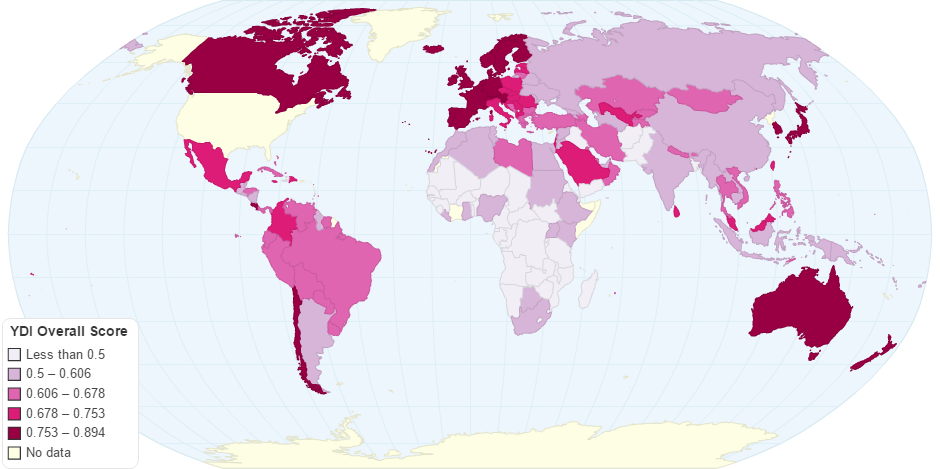This chart shows Youth Development Index 2016.
Youth development can be achieved even in lowincome countries by providing quality education and training and allowing young people to participate in the nation’s political, economic and social life. Youth development can be achieved even in lowincome countries by providing quality education and training and allowing young people to participate in the nation’s political, economic and social life.
Health and well-being are also factors that weigh heavily in youth development, and world leaders need to focus more on promoting mental and sexual health, as well as education and nutrition.Besides encouraging a healthy lifestyle, sport and physical activities also promote teamwork, responsibility and intercultural learning – all providing sound bases for young people’s roles in the future.
In the Global Youth Development Index (YDI),which is similarly innovative, the Commonwealth is again blazing a trail. It brings together vital data on young people for analysis and to guide policies and projects for youth development in every country.The YDI and this report track the story of youth development in great detail. By showing where progress is being made, and also where it isn’t, they identify areas that require attention and investment.
The healthier and more skilled our youth are, and the more they play a recognised role in our societies, the more opportunities and freedom they will have to fulfil their aspirations and talents, and the more likely it becomes that we will succeed in achieving the SDGs by 2030.
Youth development can be understood in a variety of ways. It was initially perceived and understood from within the psychological perspective, which tends to explore the ways young people grow emotionally and construct identities.broader perspective on development, often linked to sociological insights, focuses on young people’s experiences and the ways in which these experiences provide opportunities for life management and distinct, culturally-shaped,perspectives on the world and their place within Crucially,this ‘asset-based approach’ to youth development recognises the ability and agency of young people themselves to influence development outcomes.
9 years ago

